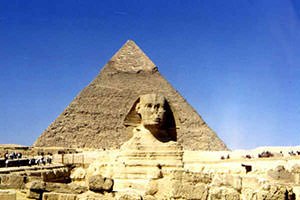A Brief History of Hypnosis

Evidence of hypnotic-like phenomena seems in several associate degree ancient cultures. The author of Genesis looks aware of the anesthetic power of psychological state once he reports that God place Adam “into a deep sleep” to require his rib to create Eve. different ancient records recommend hypnosis was employed by the oracle at the urban center and in rites in ancient Egypt (Hughes and Rothovius, 1996). the fashionable history of hypnosis begins within the late 1700s, when a French physician, Anton physician, revived an interest in hypnosis. 1734-1815 Franz Anton Mesmer was born in Vienna. Mesmer is taken into account as the daddy of hypnosis. He is remembered for the term mesmerism which represented a method of inducement trance through a series of passes he created along with his hands and/or magnets over people. He worked with someone's bewitchery (psychic and magnetic force energies). The health profession eventually discredited him despite his extensive success treating a spread of ailments. His successes pained the medical institution of the time, who organized for a political candidate French government investigation committee. This committee enclosed Benjamin Franklin, then the Yankee ambassador to France, and Joseph Guillotine, a French medical practitioner who introduced a never-fail device for physically separating the mind from the rest of the body. 1795-1860 James Braid, an English physician, originally critical suggestion (as it had become known) who afterward became interested. He aforesaid that cures weren't because of bewitchery however, they were due to suggestion. He developed the attention fixation technique (also called Braidism) of inducement relaxation and known as its psychological state (after Hypnos, the Greek god of sleep) as he thought the phenomena was a variety of sleep. Later, realizing his error, he tried to vary the name to monotheism (meaning influence of one idea)however, the first name stuck. 1825-1893 Jean Marie Jean-Martin Charcot a French neurologist, disagreed with the metropolis faculty of influence associate degreed contended that psychological state was merely a manifestation of hysteria. There was bitter group action between Charcot and the Nancy cluster (Liebault and Bernheim). He revived Mesmer's theory of bewitchery and known the 3 stages of trance; lethargy, hypersomnia, and somnambulism. 1845-1947 capital of South Dakota Janet was a French neurologist and scientist who was at the start critical of the utilization of hypnosis till he discovered its restful effects and promotion of healing. Janet was one of the few folks who continued to point out an interest in hypnosis throughout the psychotherapy rage. 1849-1936 Ivan Petrovich physiologist – Russian scientist who really was a lot of targeted on the study of the biological process. He is better-known primarily for his development of the construct of the conditioned reaction (or input Response Theory). In his classic experiment, he trained hungry dogs to salivate at the sound of a bell, which was antecedently related to the sight of food. He was awarded the Nobel prize for Physiology in 1904 for his work on digestive secretions. tho' he had nothing to try and do with hypnosis, his input Response Theory could be a cornerstone in linking and anchoring behaviors, particularly in NLP. 1857-1926 Emile Coue, a medical practitioner who developed the Laws of Suggestion. He is additionally better-known for encouraging his patients to mention to themselves 20-30 times an evening before getting to sleep; “Every day in each way, I'm recovering and better.” He also discovered that delivering positive suggestions once prescribing medication proved to be a simpler cure than prescribing medications alone. He eventually abandoned the construct of psychological state in favor of simply victimization suggestion, feeling hypnosis, and also the hypnotic state impaired the potency of the suggestion. Coues Laws of Suggestion- The Law of Concentrated Attention ” Whenever attention is targeted on thought over and over again, it ad-lib tends to grasp itself” The Law of Reverse Action “The more durable one tries to try and do something, the less probability one has of success” The Law of Dominant impact “A stronger feeling tends to exchange a weaker one” 1856-1939 Freud traveled to the metropolis and studied with Liebault and Bernheim, then did further study with Charcot. the neurologist did not incorporate psychological state in his therapeutic work but as a result, he felt he couldn't mesmerize patients to a decent depth, felt that the cures were temporary, which hypnosis stripped patients of their defenses. Freud was thought of as a poor mesmerist given his paternal manner. However, his purchasers usually went into trance and he often, unknowingly, performed non-verbal inductions once he would place his hand on his patient's head to suggest the Doctor's dominant, patient submissive roles. owing to his early dismissal of hypnosis in favor of psychoanalysis, hypnosis was nearly altogether ignored. 1875-1961 Carl Jung, a student, and colleague of Freud's, rejected Freud's psychoanalytical approach and developed his own interests. He developed the construct of the collective unconscious and archetypes. tho' he did not actively use hypnosis, he inspired his patients to use active imagination to very recent memories. He usually used the concept of the inner guide, within the healing work. He believed that the inner mind may be accessed through tools just like the I Ching and astrology. He was rejected by the conservative health profession as a mystic. However, several of his ideas and theories are actively embraced by healers to this day. 1932-1974 Milton Erickson, a scientist, and specialist pioneered the art of indirect suggestion in hypnosis. He is thought of to be the daddy of contemporary hypnosis. His strategies bypassed the acutely aware mind through the utilization of each verbal and nonverbal pacing technique as well as metaphor, confusion, and plenty of others. He was a vibrant character and has vastly influenced the application of the latest hypnotherapy and its official acceptance by the AMA. His work, combined with the work of Satir and Perls, was the premise for Bandler and Grinders Neuro-Linguistic Programming (NLP).